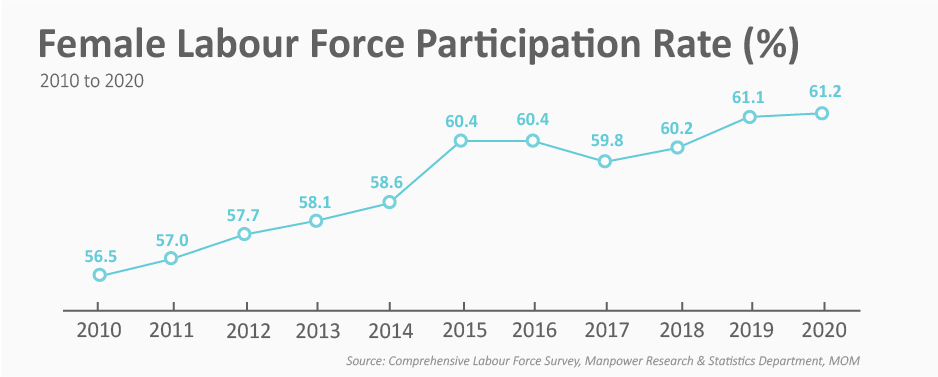Like any other country, Singapore’s aim to become a regional digital innovation hub is now facing several hurdles – the most mentioned about is no other but a severe IT talent shortage, in other words, its alarming situation of ICT training.
Singapore – the smart country in the world has been so famous for its achievements: a 16-year high in the number of jobless. Due to the COVID-19 pandemic, the said achievement somehow turns into a bad situation: 3 months ago, a Reuters report notes that up to 500 new tech vacancies are posted each week on job sites. On a government-run careers portal, there were nearly 10,000 tech-related job postings in mid-September 2021. The number doesn’t stop there, with officials expecting another 6,800 jobs and traineeships to be added to the list by June 2021.
There is an insatiable demand for ICT training and skills, particularly in the areas of data science, big data, IoT, AI/ML, and the cloud, as well as cybersecurity. Singapore’s minister-in-charge of the Smart Nation Initiative, Vivian Balakrishnan believes that its ICT sector would need another 60,000 professionals over the next three years.
Below is a comprehensive report on Singapore’s ITC training for you to base on and brief some of the first drafts for your plan.
Filling The Skills Gap Is Getting Harder and Harder
Although Singapore depends heavily on tech talents from around the region, the government has been seriously rolling out ICT training initiatives to develop a home-grown talent base. We must say that it somehow has very impressive impact: the intake for IT courses at Singapore colleges has risen 17% over the past 3 years to about 7,600 for the 2020 academic year. The country also has a large source of eager and innovative international students who are willing to join the ICT forces and gain their resident permits.

However, these are all chopped livers in comparison to the figure for tech job vacancies and the range of talent needed by the market. And with the pandemic restrictions and the tight labor market, Singapore’s situation is worsening for companies looking to hire the right talent to grow their businesses.
The reason for this gap is partly because of the technological advance speed. As the shelf life of technology is only about 18 months, it outstrips the ability to acquire the skills to keep up. Now, together with the advent/introduction of 5G and blockchain technologies, this will only be further accelerated.
Another reason is that Singaporeans rely largely on a local talent pool, as a response to the recent announcements by the Manpower Ministry. Because of COVID-19, Singapore saw the sharpest fall in total employment in more than 20 years. What’s worse, foreign workers may not return to Singapore in same numbers as before.
See Reasons to choose IT software outsourcing Vietnam.
The recent solution for this is tightening of work pass requirements by raising qualifying salaries and emphasizing the hiring of local talents.
Solutions for Tech talent shortage
Find more Tech Talents overseas
Besides investing in the development of a local pipeline of talent, Singapore also ensures that it can attract quality talent from around the world to come in and join the country’s overall efforts. The government is also trying to attract overseas-based Singaporean talent and other global talents.
Recruit More Women
According to Statista, in 2019, the female labor force participation rate in Singapore was over half, at 61.1%. Thus, it is crucial to attracting this huge number to the ICT sector.

In Southeast Asia, the gender gap at technology companies is an exacerbated symptom of the broader problems that women face in all industries. But with the industry’s rapid growth, the need for talent and attractive career characteristics position can be pivotal to solving this problem, as Tech can and always be a powerful lighthouse for change.
Recently, the Singaporean government has launched a Tech initiative in 2019 to encourage more women to explore careers in tech. That program has reached more than 117,000 women. The result is tempting, as efforts seem to be paying off, as the percentage of women enrolling in ICT courses in local universities has increased from 28% in 2017 to 35% in 2019.
Enhance Cybersecurity Talent Base
Globally, there is an IT security skills shortage of 4 million, according to the International Information System Security Certification Consortium (ISC)2. Their report noted that Singapore alone will face an estimated talent shortage of up to 3,400 cybersecurity professionals in 2020.
The training and upskilling of cybersecurity professionals, as well as fresh and mid-career non-cybersecurity professionals for cybersecurity jobs, through programs such as IMDA’s Tech Skills Accelerator are created to meet the near-term demand.
(ISC)2
With COVID, the rising trend of Malwares and security breaches in terms of frequency and degree of damagehttps://cglobal-uat., this sector needs major attention. The Singapore government has also launched the SG Cyber Leaders program to create a community for current and developing cybersecurity leaders to exchange ideas and learn about global best practices.
Conclusion: Can the Training Initiatives Fill the Talent Gap?
Singapore is doing whatever possible to help fill in the gap of IT Talents it has faced. But are these ICT training initiatives enough to address Singapore’s ICT skills shortage? By themselves, no. But as part of a broader effort, perhaps.
The digital skills gap challenge can be addressed from several fronts:
- Leverage government capabilities development programs
- Execute enterprise training roadmaps
- Provide individual self-directed learning platforms
Opportunities to practice new skills and competencies must be applied on the job so that it remains current and practical. Rapid advances in technology will continue to evolve, and companies’ ability to quickly adopt new skills will make a difference to their level of competitiveness.

And developing the ICT training to attract and recruit talent has to start much earlier. Singapore has had some of the world’s best universities, but let’s look at the fact: technology, coding, and being entrepreneurial are not just about training. They are about curiosity, and that needs to be part of a people’s DNA. They are cultural traits.
So, the Singapore government is applying ICT training in the early stage by which the personality has already been formed. Acknowledging the fact that there are not many Singaporean mid-career/ late-career technology experts or architects, for they all wanted to become managers. So the transformation needs to be more from the foundation years in primary schools, where governments need to encourage curiosity, inquisitiveness, and innovation other than chasing uniformity, consistency, and a cookie-cutter approach.




